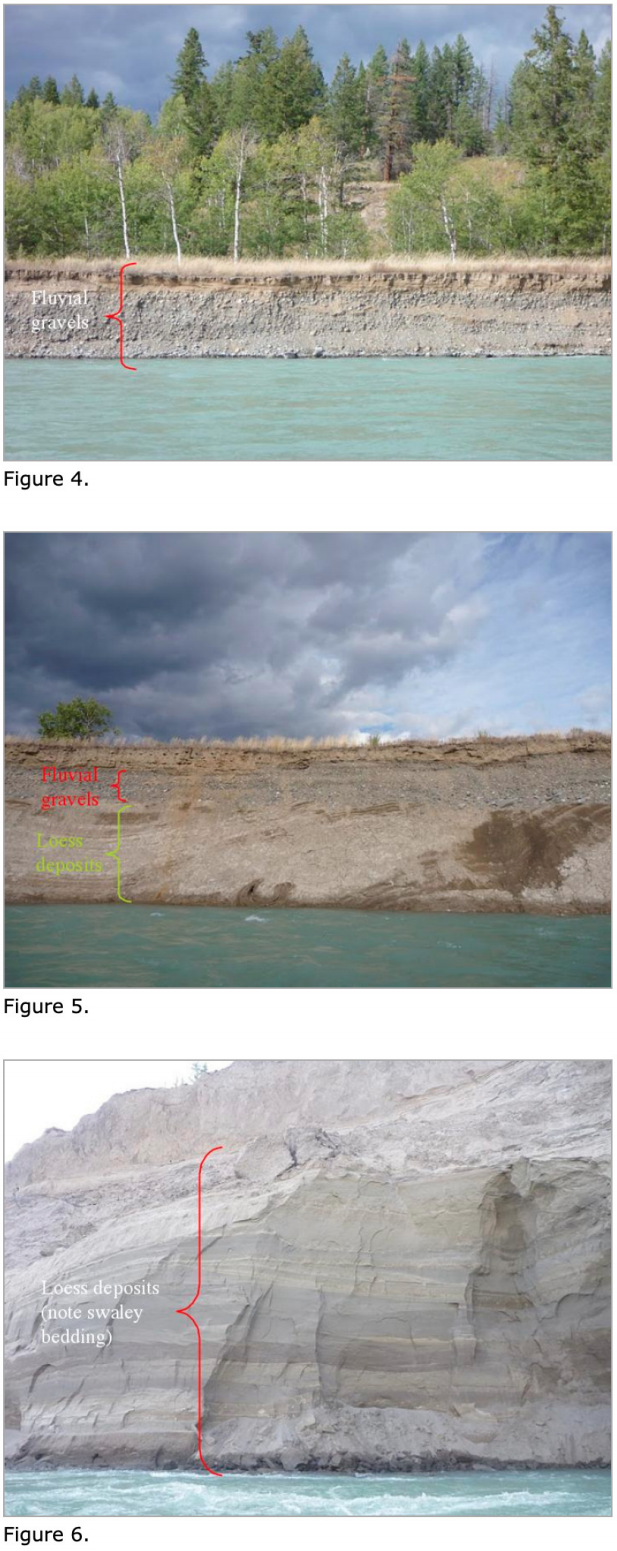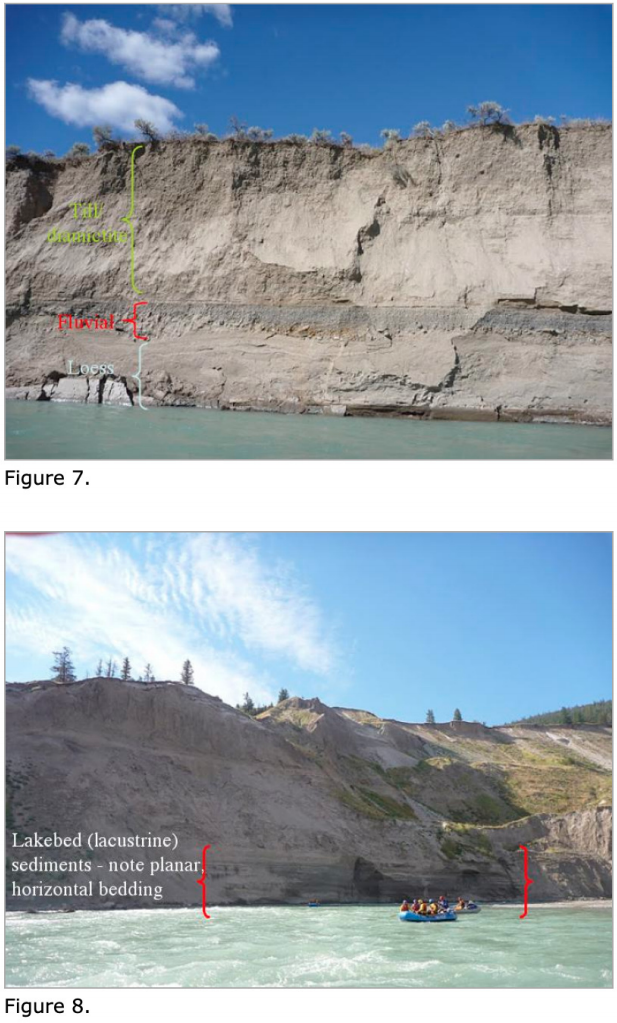One of the striking geomorphic features along the Chilko, Chilcotin, and Fraser Rivers is the presence of tall cut banks that expose thick layers of glacially-derived sediment. With a diverse assortment of bedding styles and grain sizes, these sedimentary deposits can be grouped into four main types that reflect different glacier-related depositional environments.
Glaciers, with thousands of tons of ice moving across bedrock, create an incredible amount of variably sized sediment. Entrained in ice during glacial advance, sediment becomes freed in large quantities during glacial retreat. Different methods of transport form different deposits. The four main types are (1) glacial till, (2) fluvial deposits, (3) lake deposits, and (4) loess deposits. These form in the following ways.
Glacial till is the pile of sediment left behind when a glacier melts.Because many sizes of sediment are incorporated into glacial ice, till is poorly sorted, encompassing everything from boulder-sized rocks down to mud-sized particles. When mud is the dominant grain size, the deposits are called diamictite. Glacial moraines are a good example of how glacial till and diamictite form: mounds of debris accumulate at the end of a glacier in a terminal moraine and along the sides as lateral moraines.
Fluvial deposits are generally better sorted and often reflect steep gradient, high flow velocity river systems. As glaciers move and ultimately recede, braided, sediment-choked river channels emerge. Deposits appear layered, though not necessarily uniformly, and flow direction can often be determined. Erosional unconformities, where high stream power has removed material, often separate the base of fluvial deposits from the sediment beneath it.
Loess deposits are wind (eolian) sediments deposited in dune-style formations. Because of glaciers' size, topography, and slope, they create their own weather patterns, including katabatic winds that blow fine sediment into dunes. Loess deposits, like lake deposits, are finely laminated, but with sections of inclined layers that are not parallel.
Lake (lacustrine) deposits are fine grained, horizontally layered sediments that settle out of glacial lakes. These lakes are abundant during glacial retreat for two reasons: (a) superabundant piled sediments from moraines and till, as well as the ice itself, create uneven topography that traps water, and (b) abundant water from melting glaciers and precipitation provides a source. Fine particles - glacial flour - blow into the lakes and settle out. Finely bedded lake sediments are flat and neatly laminated, and are often deformed.



